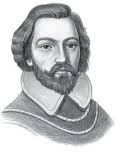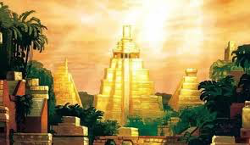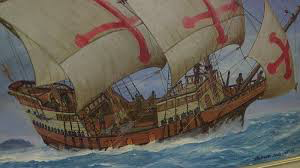Juan Rodríguez Cabrillo: California Coastline Explorer
Juan Rodríguez Cabrillo was the first European to explore the California coast. He is thought to have been born before the turn of the 16th Century. Some cities in Portugal are listed as his birthplace. He is for sure known to have grown up in Castile. 
He left Spain early in the 16th Century and sailed across the Atlantic, landing in Cuba, as part of an expedition to conquer and colonize the island. Originally part of an expedition from Cuba that was sent to stop Hernán Cortés, Cabrillo instead joined Cortés and was present at the conquest of the Aztec Empire. He was known as a captain of crossbowmen. As well, Cabrillo oversaw the construction of a dozen 40-foot-long boats that ferried troops across the water during the capture of Tenochtitlán, the Aztec capital. Cabrillo continued as a soldier in what is now Central America, as part of the conquest of both present-day El Salvador and present-day Guatemala. For this role in the conquests, he was granted land and a number of mines that he then managed for more than a decade. He made a fortune in gold mining and became well-known as a trader and a prominent citizen in Santiago, Guatemala's principal city. He had returned in 1532 to Spain; here, he met Beatriz Sanchez de Ortega. They married that year and returned to Guatemala. They had two sons together. 
Guatemala Gov. Pedro de Alvarado had died in 1541, and procuring his ships was Antonio de Mendoza, the New Spain viceroy. Mendoza, like so many other Europeans, wanted to find the fabled Seven Cities of Gold, the land of great wealth about which so many native peoples told stories and so named Cabrillo as captain of an expedition northward. Cabrillo was also supposed to meet up with another Spanish explorer, Francisco Vásquez de Coronado, who was crossing what is now the southern U.S. Cabrillo also wanted to expand his trading business with a route between Guatemala and the Spice Islands. 
Cabrillo was in command of 200 men aboard three ships, the San Miguel, the Victoria, and the San Salvador, a 100-foot galleon that served as the flagship and had cannon to back it up. Provisioned with two years' worth of supplies, the ships left Navidad on June 24, 1542 and headed north, up the Baja California coast. They reached what is today San Diego Bay on September 28; he named it San Miguel. Continuing up the California coast, they stopped at various islands and talked to various Native American tribes. Farther north they went, reaching what is now Point Reyes on November 13. Strong weather forced them to turn around, and they reached what is now Monterey Bay on November 16. Historians are not sure whether they traveled further north, but no record exists of Cabrillo's reaching San Francisco Bay. Convinced by the heavy winds and stormy waters, they headed back south, reaching Santa Catalina Island on November 23. Cabrillo, who had broken an arm in a fall, suffered another injury, a shin fracture, while trying to help his men fight off hostile native warriors. He became ill and never left the island. He died on nearby San Miguel Island on Jan. 3, 1543. 
Before he died, Cabrillo had named Bartolomé Ferrer, the captain of the Victoria, as overall commander, and it was under Ferrer that the expedition went even farther north, perhaps reaching what is now he Oregon coastline, before heading home, reaching Navidad on April 14, 1543. There, he reported all that Cabrillo and his crews had observed. The expedition had found neither Cibola nor Coronado but he seen lands and peoples that no European had before. Cabrillo is remembered as the first European to lead an expedition to explore what is now the west coast of the U.S. He is remembered by monuments (the most well-known of which is the Cabrillo National Monument, on Point Loma, where he is thought to have anchored the San Salvador) and in the name of cities, towns, counties, schools and other buildings, roads, and parks. The Maritime Museum of San Diego in 2011 built a life-size of Cabrillo's flagship, the San Salvador; it now sails along the southern California coast on regular tours. |
|
Social Studies for Kids
copyright 2002–2025
David White





